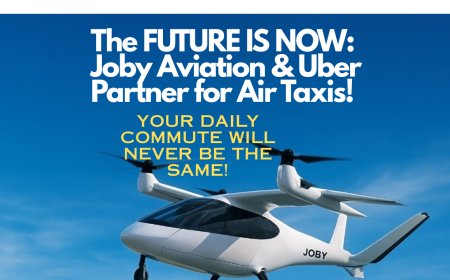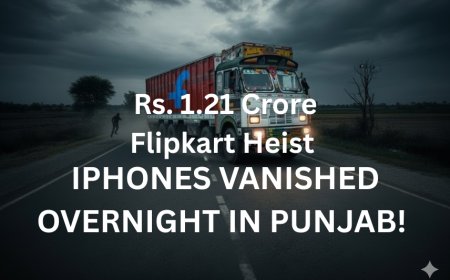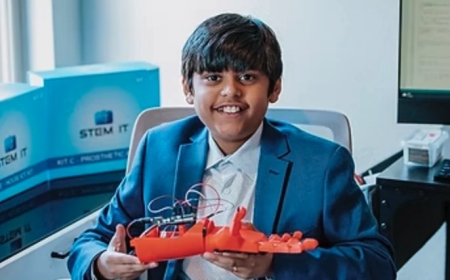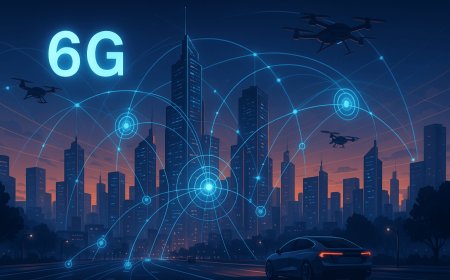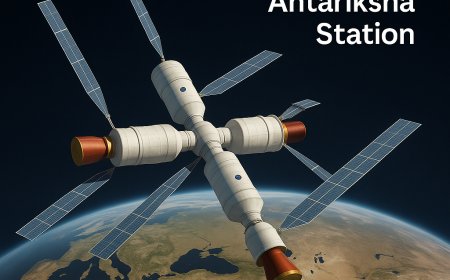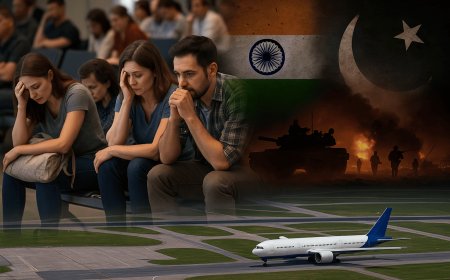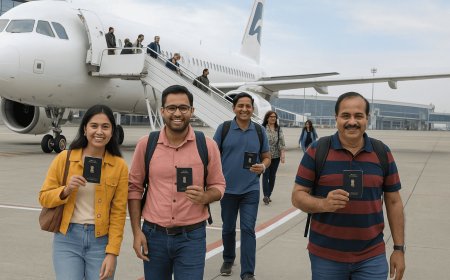Uber Is Flying You to the Skies: Inside Its Strategy to Introduce Air Taxis with Joby Aviation
Explore Uber's plan for air taxis! Learn the strategy behind its partnership with Joby Aviation to launch quiet, electric urban air mobility.
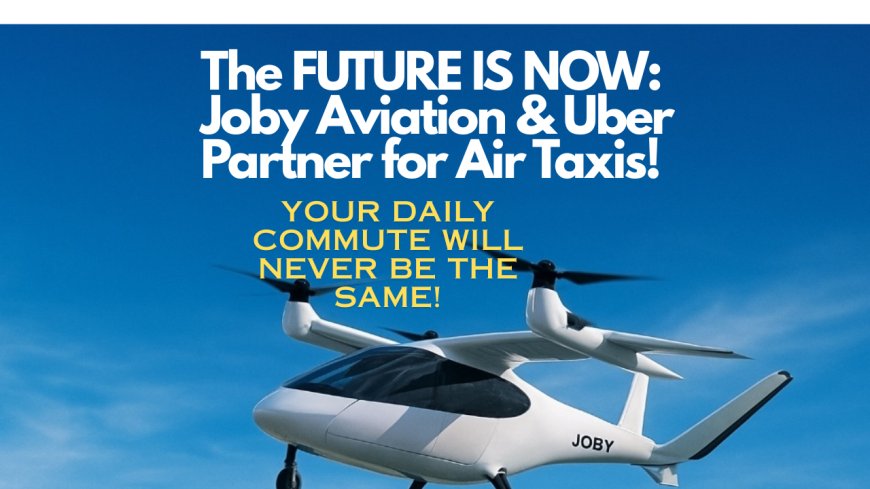
Paying for a helicopter ride is like paying for a taxi? That is what Uber wishes to make available within a year or two. The ride-hailing business that revolutionized driving on roads is now getting set to take your ride off roads literally.
Uber is teaming up with Joby Aviation, a California-based aerospace company, to roll out sky-based ride-sharing services by 2026. The plan: integrate helicopters, seaplanes, and soon, electric air taxis directly into the Uber app. You’ll be able to book an air ride as easily as an UberX.
This move isn’t just about luxury travel. It’s a serious step toward transforming how people move across crowded cities. Let’s break it down.
Uber and Joby Aviation: The Partnership that is Changing Urban Commuting
Uber's collaboration with Joby Aviation is the newest installment in a long-term strategy to link all transport means through one app. Joby recently fortified itself by purchasing Blade Air Mobility for $125 million in August 2025.
Blade currently operates helicopter and seaplane routes in such cities as New York, Dubai, and sections of Southern Europe. Taking over Blade's company, Joby suddenly has access to established air paths and customer bases – a clever method of skipping unnecessary detours so it can get there earlier.
For Uber, the agreement is a gold ticket. It can now feed Blade's air routes into its system and set its sights on the next frontier: electric vertical takeoff and landing aircraft, or eVTOLs.
How It Will Work: Air Travel, One Tap Away
If you’ve ever used Uber for a car ride, the air version will feel familiar. Passengers will open the same app, choose an air option, and book their flight, whether for an airport transfer, a short city hop, or an intercity trip.
Initial operations will concentrate on high-demand routes, particularly airport routes. These have already demonstrated strong consumer demand. Blade, as an example, takes off from Manhattan to JFK or Newark airports and typically costs around $195 per seat. These numbers provide some sense of how early Uber Air trips will cost before the benefits of scale take hold.
Picture this: arriving at JFK, checking the Uber app, and reading "Book an air ride to Manhattan — 7 minutes." That is how easy Uber and Joby want to make it.
Introducing Joby's eVTOL Aircraft: The Urban Air Mobility Future
Joby's eVTOL aircraft are leading the game here. Picturing them as electric helicopters designed for cities - they're speedy, clean, and very quiet.
Each aircraft will:
1. Transport four passengers and a pilot.
2. Fly up to 200 miles per hour.
3. Fly at 1/50th the noise of conventional helicopters, 100 times less noisy.
4. Power is solely electric with zero emissions.
They are optimized for city short flights and regional flights. They can take off and land vertically, so they can be used from rooftops, parking garages, or certified heliports with no requirement for long runways.
The outcome? Lighter, quicker travel without the sound or pollution of the old kind.
Timeline and Expected Launch Cities
Uber will introduce this in phases.
2025–2026: You'll begin to notice current Blade helicopter and seaplane services included in the Uber app. What that really amounts to is that if you just so happen to find yourself in New York, Dubai, or regions of Southern Europe, you could be able to make a reservation for an air route directly through Uber.
2026 and onwards: Joby's eVTOL air taxis start coming onto the platform. Roll-out is initially concentrated in Dubai, New York City, Los Angeles, Florida, London, and Tokyo before gradually spreading even wider as infrastructure and regulatory clearances come into play.
Dubai will take the lead, supported by its robust backing of urban air mobility as well as early adoption of technology-based drones.
The Larger Picture: Uber's Journey from Cars to Sky Mobility
Uber's aspiration to touch the sky does not go back as far as yet. Way back in 2019, Joby acquired Uber Elevate, Uber's experimental aerial unit. That was a bet on the future then. But today, that foundation is paying off.
The company’s goal has always been to evolve into a multi-modal mobility platform where a user can move across ground, water, and air seamlessly using one app. Whether you’re taking a car to a helipad, hopping on an eVTOL, or catching a boat, Uber wants to handle every leg of that journey.
It's not merely about rides. It's mobility-as-a-service (MaaS), an innovative, integrated, and environmentally friendly vision of city travel.
Why This Move Is Important to Travelers and Cities
Let's speak of influence.
1. Time savings: City traffic is not only frustrating, it's a huge productivity destroyer. A seven-minute air transfer can substitute an hour-long drive during rush hour. For business travelers, it means a huge time gain.
2. Cleaner skies and quieter cities: Existing helicopters are noisy and fuel-greedy. eVTOLs are projected to offer zero emissions and quieter operations. Noisy pollution in urban cities with carbon caps will be the recipients of this transformation.
3. Urban aviation's new economy: Air taxi networks will generate jobs, pilots, and maintenance teams, as well as construction and operating staff. It is a new tier of the economy based on clean tech.
4. Master plan for future transport: Uber is not alone. There is also Archer Aviation, Volocopter, and Lilium working on eVTOLs. And with Uber's size and customer base comes the biggest head start. Once passengers are accustomed to reserving flights through the app, usage might soar.
The Challenges Ahead
There has always been a great change in front of any great transition.
1. Regulation: Airspace management, safety certification, and pilot licensure must be coordinated worldwide. Regulators such as the FAA and EASA are only beginning to develop eVTOL standards, but large-scale approval will be a long time coming.
2. Infrastructure: Vertiports on rooftops, charging hubs, and interfaces to existing airports are underway. Joby and Uber will require city alliances to make it effective.
3. Cost: Initial flights are going to be expensive. But as technology improves and manufacturing increases, prices may decrease rapidly, similar to with electric vehicles and ride-sharing overall.
Even with this, all the firms believe that when riders feel the speed, silence, and sustainability of eVTOLs, they will be in fashion.
Uber's Evolution: From Ride-Hailing to Mobility Everywhere
Uber began with a promise so simple: press a button, take a ride. It eventually added bikes, scooters, boats, and even freight. The next addition is air taxis for the company as it looks to link cities around the world.
The partnership also turns Uber into a sweetheart of urban innovation. As cities become increasingly urban and traffic becomes more congested, upward transport isn't merely a nicety; it's a necessity.
Leadership at both firms frames this as a move towards "quiet, sustainable, and faster urban travel." Behind the jargon, however, lies an unmistakable intent: accelerate daily commutes and make them cleaner.
The Road (and Sky) Ahead
So what are we all going to do for you?
Within a year or two, you may tap your Uber app and select from "Car," "Comfort," and "Air." Do you take an eVTOL from JFK to Midtown Manhattan, cutting 90 minutes of drive time down to 8 minutes of high-tech flight?
This is no longer science fiction. It's the next chapter in transportation.
Uber's collaboration with Joby Aviation is not just a trial of technology; it's a statement. Travel doesn't end at the ground. And as cities keep on rising, our means of transportation will as well.
One app. One click. The sky's no longer the limit.
What's Your Reaction?
 Like
0
Like
0
 Dislike
0
Dislike
0
 Love
0
Love
0
 Funny
0
Funny
0
 Angry
0
Angry
0
 Sad
0
Sad
0
 Wow
0
Wow
0










